- Fresh fires are engulfing swaths of the Pantanal, including Pantanal do Rio Negro State Park, a protected reserve with a rich biodiversity of plant and animal species. The flames have affected at least 10,062 hectares of the 78,302-hectare park.
- These fires follow devastating blazes in 2020 and 2021, which consumed huge parts of the Pantanal, the world’s largest tropical wetlands which straddles the borders of Brazil, Paraguay and Bolivia.
- Fire brigades fear more fires may be in store for the Pantanal, as ranchers and farmers continue to use fire to clear agricultural plots of land, despite a ban prohibiting this practice during the region’s dry season.
- Environmentalists warn a changing climate is having a devastating impact on the Pantanal, fueling fires that are more frequent.
The fires started small, charring a handful of areas scattered across a southern stretch of Brazil’s Pantanal wetlands. Fueled by searing temperatures and months of drought, the flames quickly spread across the parched grasslands of Pantanal do Rio Negro State Park, melting together into a single, roaring wildfire.
Data from the University of Maryland and U.S. space agency NASA, visualized on Global Forest Watch, show the fires started in May; within two months they had spread across some 450 square kilometers (174 square miles), reducing the vegetation in their path to ashes.
In mid-July, a brigade of 30 firefighters and volunteers was dispatched to the park and the surrounding region to combat the fires, according to authorities. After days of fighting against angry flames and blustering winds, they succeeded in controlling the wildfire and halting its advance towards a nearby farm — but not before the blaze consumed some 10,062 hectares, nearly 13% of the park.
Recent satellite images suggests fire activity resumed in early August, but was quelled as of August 14.
“They did everything they could,” said Leonardo Pereira Gomes, strategy director at SOS Pantanal, a nonprofit that helped coordinate the combat of the flames. “But the soil is really dry, the rains haven’t come. With these climate conditions, it’s created a really worrying situation.”
Pantanal do Rio Negro State Park stretches some 78,302 hectares across the municipalities of Aquidauana and Corumbá, in Brazil’s state of Mato Grosso do Sul. This protected reserve, part of the Pantanal wetlands, is made up of a maze of swamps, lagoons and submerged forest. Treasured by biologists, the area is known as a breeding spot for a myriad of fish species.
But, this year, the state park has been at the epicenter of wildfires engulfing swaths of the Pantanal, the world’s largest tropical wetlands. Between May 1 and July 26, satellites from NASA recorded 677 fire alerts in the Pantanal do Rio Negro park.
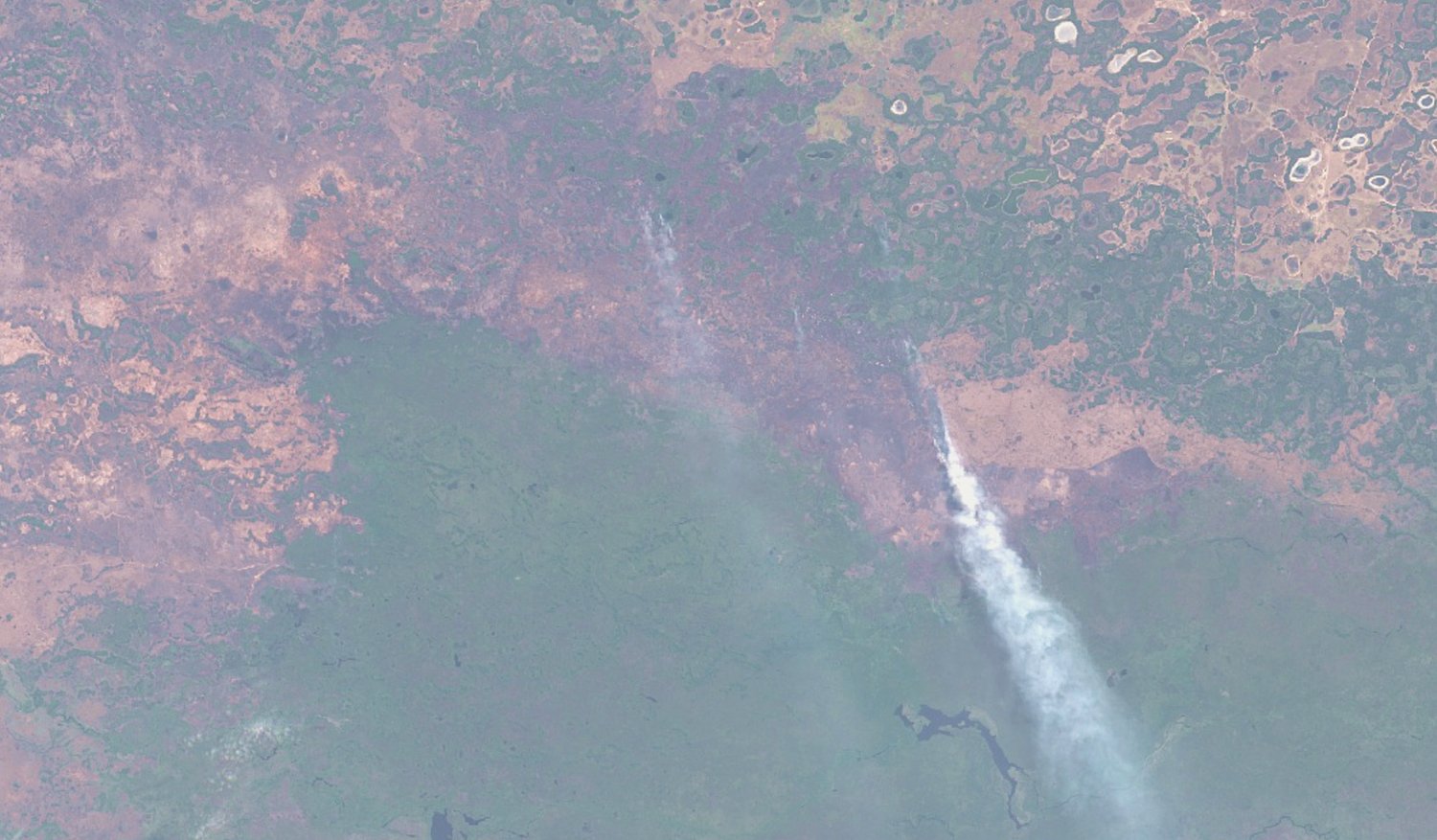
Across Brazil’s Pantanal, the area affected by flames so far this year is 26% larger than during the same period in 2021, according to the Pantanal Observatory. With the fire season only just beginning, flames had consumed about 14.5% of the biome by the end of July, according to Cyntia Santos, a conservation analyst at WWF Brazil.
“Over the last few years, we’ve seen drought hitting the region hard and draining…the wetlands,” she said, noting reserves like the Parque Estadual Pantanal do Rio Negro are especially vulnerable. “And it seems like, this year, we’re already seeing a worsening of the fires.”
With the dry season now in full swing, the fear is that the battle to control the flames — within the park and across the Pantanal — may be only just beginning. Amid soaring temperatures and few signs of rain, authorities fear more out-of-control fires could be in store for the region in the weeks and months ahead.
“We were able to control this fire,” said Lieutenant Colonel Tatiane Dias de Oliveira Inoue, head of operations for Mato Grosso do Sul state’s Military Fire Brigade. “But the outlook for the future is much worse than what we’re living today. As much as we prepare, as much as we try, we know more fires are coming.”
Pantanal under threat
The Pantanal stretches nearly 210,000 square kilometers (81,000 square miles) across Brazil, Bolivia and Paraguay. In Brazil, it spills across the states of Mato Grosso do Sul and Mato Grosso. The biome is home to a rich variety of plant and animal species, with some — like the jaguar (Panthera onca) and the hyacinth macaw (Anodorhynchus hyacinthinus) — threatened with extinction.
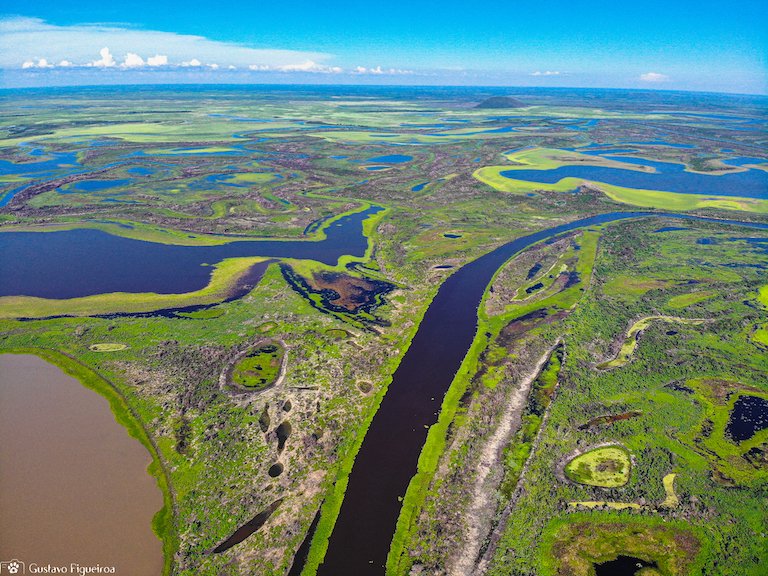
Each year, between December and March, heavy rains typically flood most of the Pantanal, turning it into a labyrinth of marshes and lagoons brimming with caiman and piranhas. But the Pantanal has suffered a series of punishing droughts in recent years, which has fueled devastating fires across the region.
“The Pantanal still hasn’t gotten the rains — the relief — that it needs,” said Ane Alencar, director of science at the Amazon Environmental Research Institute (IPAM). “And in a really flammable environment, this has the capacity to trigger large-scale destruction.”
The devastation has been intensified by the unique way that fires burn in the Pantanal. Unlike in the Amazon rainforest, where flames consume shrubs and trees, blazes in the Pantanal tend to burn just below the earth’s surface, fed by tightly-packed and highly-combustible decomposed vegetation called peat.
“If you take your eye off it, the fire can suddenly reignite in another area, kilometers ahead. It’s really difficult to keep up,” Gomes said. “It’s work that never ceases.”
The worst of the flames engulfed some 27% of the Pantanal in 2020, equivalent to about 4 million hectares — an area larger than Belgium. Last year brought little relief: some 1.2 million hectares were lost in a new wave of fires that charred some 12 percent of the biome.
Still, last year’s fires were less severe than many expected in part due to a more aggressive response by authorities. But experts fear there is now a dangerous build-up of parched, combustible biomass across the Pantanal, which could erupt in flames and cause even more destruction this year.
“We have a level of biomass that we haven’t seen in a long time,” said Inoue. “And when this biomass is exposed to climate conditions like the ones we have here during the dry season…it’s basically a given that wildfires will happen.”
Uphill battle
State and federal agencies — including Ibama, ICMBio and state fire brigades — have dramatically improved their response to the fires since 2020, when the unprecedented blazes caught them unprepared and underfunded, after the government of President Jair Bolsonaro slashed firefighting funding by 58%.
This time around, authorities have set up emergency task forces, installed advanced camera monitoring, and poured millions into new equipment — like helicopters — to fight the fires. Mato Grosso do Sul also approved a new framework for combating the flames in June, although it has yet to be implemented.
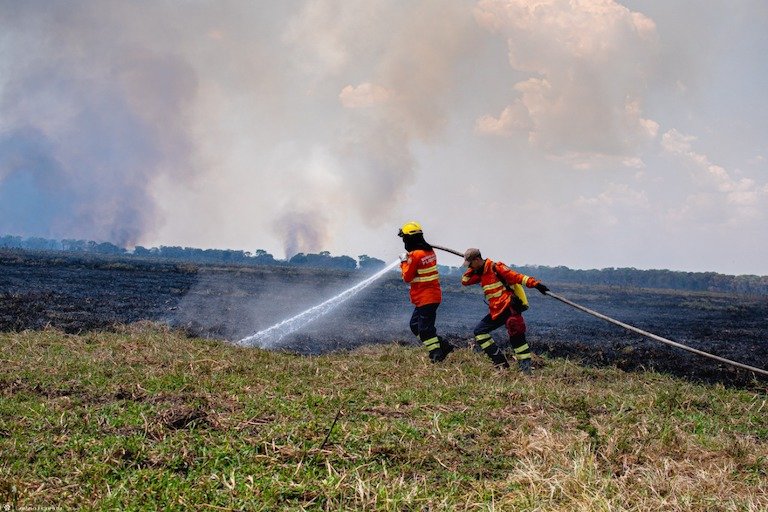
Civil society groups have also jumped into action: SOS Pantanal has so far trained 24 volunteer brigades on the front lines of the fires, who can act as first-responders across an area spanning 657,000 hectares, Gomes said. They then become part of a monitoring network, receiving alerts twice a day about fire hotspots, along with instructions on how to react.
“Last year’s results were really positive,” Gomes said. “It proved that this type of vigilance is the way to detect the fires and respond quickly.” State and federal firefighters can then jump in to assist quickly if local teams need support, he added.
Still, combating fires in the Pantanal, where many flooded areas are nearly impossible to access, remains complex. This is especially true in the Pantanal do Rio Negro, where huge swaths of the reserve are not reachable by land, said Inoue.
“The Pantanal is enormous,” she told Mongabay in a phone interview. “We’re talking about regions that are difficult to access, areas that are flooded. It’s not just any vehicle that can get there. So, sometimes, the only way to get to the fire is by plane.” Brigades also struggle to combat the subterranean flames, which can continue to burn for days or weeks, undetected.
Natural wildfires are not unusual in the Pantanal, especially during wetter months when lightning storms can set ablaze the peat soil. These low-intensity fires can burn with persistence, but the heavy rains that normally pour down over this region tend to extinguish the flames quickly.
“The Pantanal is considered, ecologically, an environment that is well-adapted to fire,” said Alencar. “So, it happens naturally. But this is not what we’re seeing now.”
Across the Pantanal, cattle ranchers set ablaze degraded pastures to renew them and farmers burn their plots of land to prepare them for fresh plantings. In the Pantanal do Rio Negro park, fishermen often clear riverbanks by burning the shrubs lining them, while traditional communities use fire to disperse bees and harvest their honey.
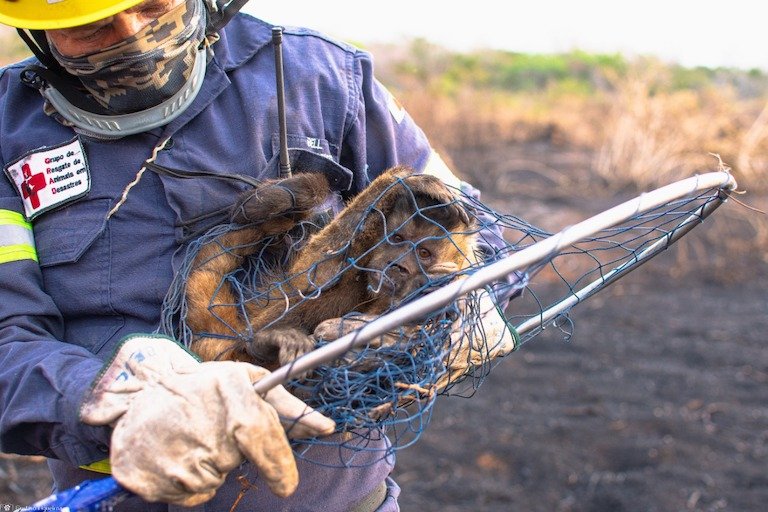
Such burning is banned during the dry season to avoid the risk of wildfires, but enforcement is often lax. And environmentalists say this reckless human behavior, coupled with a drier climate, is creating the perfect conditions for such small-scale fires to flare into mega-blazes that engulf thousands of hectares.
“Human action is behind many of these fires,” said Alencar. “And there’s an interplay between the use of fire by people and climate conditions that allows these fires to spread in a much more aggressive and uncontrollable way.”
A new normal
At the core of the Pantanal fires, environmentalists say, is a rapidly changing climate driven by the mass deforestation ravaging other regions of Brazil. The result is a convergence of environmental crises with devastating results.
Most of the rains that feed the Pantanal’s rivers and streams come from the Amazon, in the form of air masses loaded with evaporated moisture from the rainforest. As deforestation has advanced, reaching its highest level in 15 years, the Amazon is growing drier, with scientists warning it is approaching a tipping point that could see swaths of it turn into a savanna.
Meanwhile, across the Pantanal and neighboring Cerrado — a highly threatened tropical savannah — sprawling soy plantations and cattle ranches have shifted the cycles of flooding in the region, leaving it parched and more susceptible to fire, said Santos.
“Naturally, (the Pantanal) is resilient,” she said. “But a series of pressures in recent years have diminished the biome’s resilience…So today, the Pantanal doesn’t react like it did 10 years ago, when there was a different, more natural dynamic in the flooding cycle.”
In the Pantanal — and elsewhere — there are clear markers of a changing climate. Last year, Brazil suffered its worst drought in 92 years, triggering water and electricity shortages across the country. Rain has been scarce this year too: in the Pantanal, rainfall levels are expected to remain 40-50% below normal through September, according to Mato Grosso do Sul’s Center for Weather and Climate Monitoring.
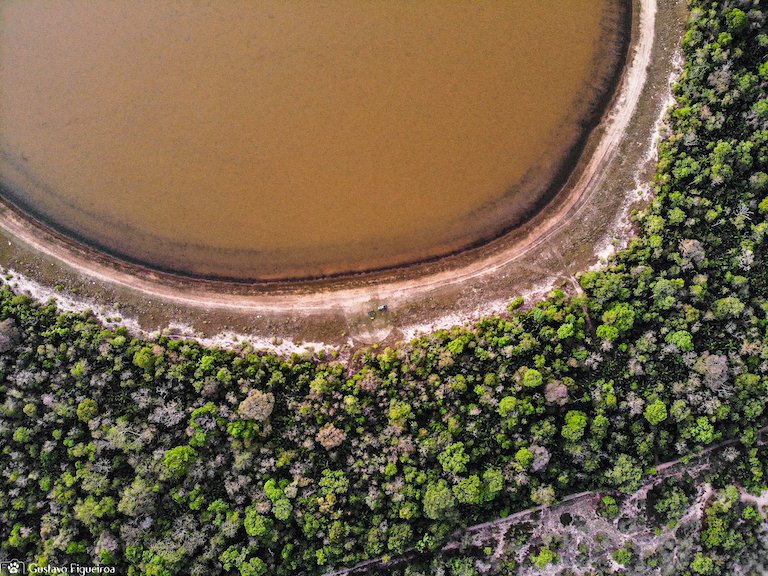
Fueled by these dramatic climate conditions, experts say wildfires that once occurred every few decades are now becoming a new normal. And as devastating fires engulf swaths of the Pantanal with more frequency, the biome is changing in dramatic ways: with less time to recover between major blazes, plant species that are resistant to fire are flourishing, changing the ecological make-up of the region, said Alencar.
“When an area burns, begins to recover, and then burns again — not all the species will be able to bounce back,” said Alencar. “Some take decades to recover. So, the more frequent the fires, the bigger the impact on the type of native vegetation we see.”
Those on the front lines of the fires are also bracing for a future with more blazes. The work of preparing for more frequent wildfires and improving firefighting efforts is underway, Gomes says, but it will likely take decades to fully adapt.
“This is a scenario that is here to stay,” Gomes said. “We might have some years that are better than others…But the climate conditions won’t get any better. And we need to adapt to a changing climate as the new normal.”
Banner image: An SOS Pantanal firefighter battles a blaze. Image by Gustavo Figueiroa/SOS Pantanal.
Feedback: Use this form to send a message to the editor of this post. If you want to post a public comment, you can do that at the bottom of the page.












